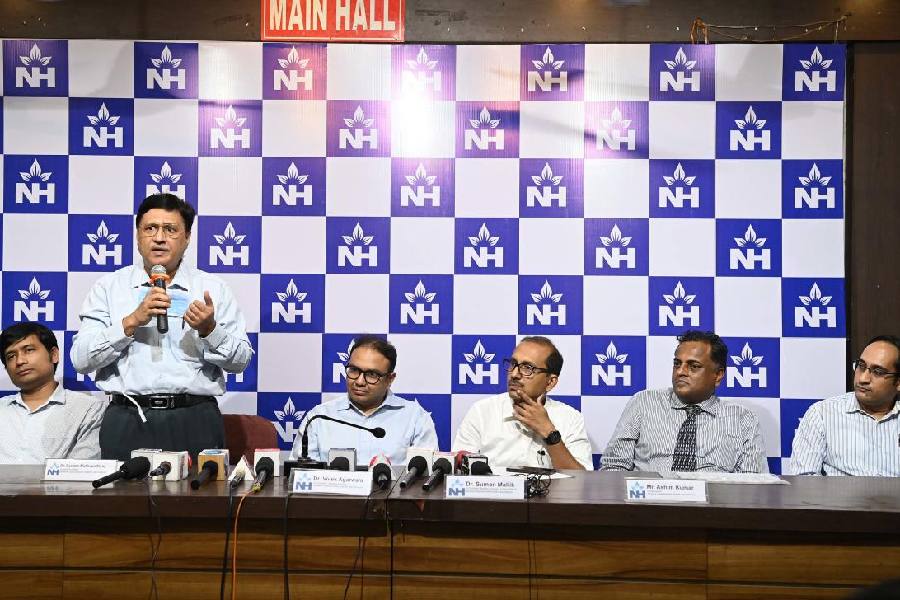A machine that produces accurate images of tumours and provides radiation doses to the targeted spot is among the advanced forms of cancer treatment, doctors said at a news conference last week.
The machine, known as the TrueBeam Linear Accelerator, minimises the damage caused to tissues neighbouring the tumour, they added. The machine has an in-built scanner which helps in detecting the exact location of tumours.
“Let us take the example of a tumour in the abdomen. Earlier, we tried to estimate the expected movement of a tumour. For a 5mm tumour, we had to keep an additional margin of 1 to 1.5cm to give radiation. With the new machine, the in-built scanner scans in real time and a doctor can see the image on the screen. He can check for, and respond to, any actual movement. That reduces the 1.5cm treatment area to 5mm. The difference might look small but put in context, it is of huge significance,” said Suman Mallik, senior consultant radiation oncologist and clinical director at Narayana Superspeciality Hospital in Howrah.
Tumours in the lung, liver and pancreas are seldom static, he said.
“The machine is helpful in treating tumours in the liver, lungs and abdomen which usually keep moving. Earlier, we would have to take the entire area of movement into consideration while radiation. Now, we can go for precision treatment during a specific respiratory phase. While inspiration (inhaling), the tumour is in one place. During expiration (exhaling), it changes position. The new tool allows a doctor to generate a protocol for radiation only during inspiration,” said Mallik.
The hospital has acquired the machine and a group of cancer specialists gave a presentation on it at the Press Club last Thursday.
Surgical oncologist Gautam Mukhopadhyay, attached to the hospital, said surgery alone was not enough in cancer treatment.
“Along with surgery, the backup of chemotherapy and radiation is very important. Without these, the treatment is incomplete. The new radiation technologies will be of immense help to cancer patients,” he said.
Apart from the radiation machine, the doctors showcased a four-dimensional CT scanner, which, they said, provided “much more clarity in images” than existing scanners.
Dipanjan Majumdar, consultant radiation oncologist at the hospital, said these machines were instruments of“stereotactic radiation technology”.
“From using two-dimensional images to treat tumours, technology has come along way. In the earlier method, we took the help of 2D images to treat a tumour. In that process, irrespective of the size of the tumour, a significant volume of normal tissues around the tumour would be affected by the radiation. But stereotactic radiation delivers a precise dose of radiation to the target, a tumour. It is especially helpful in treating tumours in the brain, lungs and liver,” he said.
